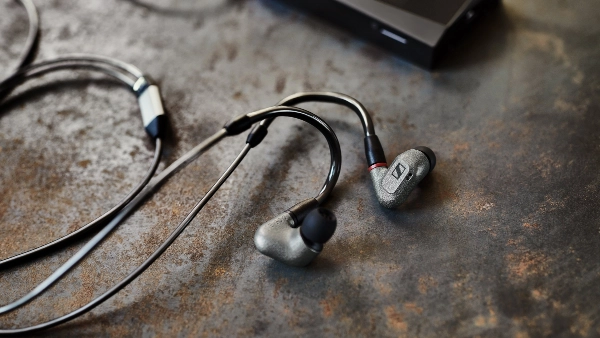Amorphous metals with unique material properties
Whether it is about medical technology, mobility, robotics, sensors, aerospace or now lifestyle – amorphous metals are particularly required whenever components need maximum precision and robustness. This is due to their unique material properties, which combine supposedly contradictory characteristics such as high solidity and high elasticity at the same time. Now, these advantages are applied in the housings of sophisticated earphones.

Producing amorphous metals begins with a shock. They are created by shock freezing metallic melts and thus visually resemble conventional metal at first sight. However, unlike conventional metals, amorphous metals do not have a solid crystal structure. This means that their atoms form a chaotic pattern opposed to the regular lattice of conventional metals.

The disorder has plenty of advantages though:
- Strength: Amorphous metal is twice as solid as steel and thus protects sensitive components. At the same time, it allows components to be made very small and - if desired - thin, which is in line with the trend towards miniaturization.
- Flexibility: Is as flexible as synthetic material
- Quality: Offers durability and corrosion protection as well as a high-quality look
- Elasticity: Reliably transmits large amounts of elastic and deformation energy, even acoustically
- Design: Allows geometric design and manufacturing freedom within tight tolerances
- Biocompatibility: Has antibacterial properties in contact with skin and is approved for use in implants
Our contribution: Zirconium housing for high-end headphones
Heraeus Amloy specializes in the development of amorphous alloys and the production of amorphous components using injection molding and 3D printing. The special properties of amorphous metals in combination with the company's technological know-how enable new high-tech applications, as the cooperation with Sennheiser shows. To produce high-quality in-ear headphone housings, the Metal Additive Manufacturing printing process is used, which capitalizes on the many advantages of amorphous metals.
The housings are additively manufactured with the help of 3D printers from Trumpf, a technology company that Heraeus Amloy has worked with for many years. With high precision, this printing process allows to realize any imaginable shape within narrow tolerances. Provided chambers and channels are created in the manufacturing phase without mechanical rework.

For the housing material, Sennheiser chose AMLOY-ZR01, an amorphous zirconium alloy. It protects the sensitive high-end audio components such as the transducer inside and thus ensures a particularly long product life. In addition, the material does not get warm during use which makes the earphones very comfortable to wear. At the same time, the aesthetic material contributes to natural sound reproduction.
Each individual housing is manufactured in layers from the powder of the amorphous zirconium-based alloy. After printing, the component is manually post-treated to achieve the desired surface structure. The result is a glossy, satin matte exterior. When prepared this way, daily use leaves virtually no marks.
In the industrial environment, the alloy can be used beneficially where maximum precision and reliability are required. This especially applies in the aerospace, medical technology, and mobility sectors, as well as in tooling applications. Beside the use in sensor applications, the advantages of amorphous alloys may also add value in robotics and mechanics. The use is not limited to the audio segment, amorphous metals might also be applied in different lifestyle products. For instance, Heraeus Amloy already produces components for instruments such as guitars or accessories like watches.


